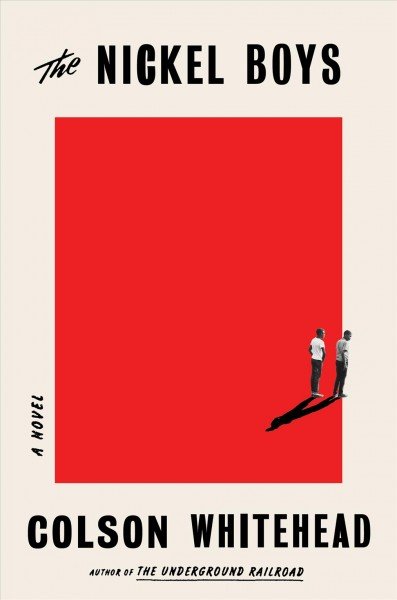
BOOK REVIEW: Rooted In History, ‘The Nickel Boys’ Is A Great American Novel
LISTEN
BY MAUREEN CORRIGAN
It’s pretty rare for a writer to produce a novel that wins the Pulitzer Prize and the National Book Award and, then, a scant three years later, bring out another novel that’s even more extraordinary. But, that’s what Colson Whitehead has done in following up his 2016 novel, The Underground Railroad, with The Nickel Boys. It’s a masterpiece squared, rooted in history and American mythology and, yet, painfully topical in its visions of justice and mercy erratically denied.
By Whitehead’s own admission, the disturbing true story that informs The Nickel Boys derailed him from the crime novel he’d been planning to write. A few years ago, Whitehead read news reports about The Arthur G. Dozier School for Boys, a segregated reform school in Florida that opened in 1900 and was finally shut down in 2011. Unmarked graves of boys brutalized and even possibly murdered at the school were discovered — and are still being discovered — by forensic archaeologists. In Whitehead’s novel, The Dozier School is renamed “The Nickel Academy” and it’s at this house of horrors that his main character, an African American teenager named Elwood Curtis, winds up.
It’s the early 1960s and Elwood has been listening to a record album of Martin Luther King Jr.’s speeches that his grandmother gave him for Christmas. Elwood has absorbed Dr. King’s message that he “must walk the streets of life every day with [a] sense of dignity and … somebody-ness.”

The Nickel Boys
by Colson Whitehead
The other kids in high school think he’s a goody goody, but industrious Elwood believes in the meritocracy and, in fact, he’s already been offered an opportunity to take classes at a “colored college” miles away from his home in Tallahassee. To get there he has to hitchhike. That’s when Fate steps in in the form of a black man driving a bright green Plymouth Fury, which turns out to be stolen. Even though Elwood is but a clueless passenger, he’s sent to the Nickel Academy for car theft.
Whitehead’s novel is short and intense; its chapters as compact as the isolation cells that Nickel boys are thrown into and sometimes never leave. One way that Whitehead uses the narrative spareness of The Nickel Boys to devastating effect is by tightly juxtaposing scenes and images and letting the contrasts silently sink in.
For instance, Elwood’s arrival (in handcuffs) at The Nickel Academy is made all the more wretched by the fact that the school — all green lawns and red brick — looks like his intended college, at least on the outside. And a shattering chapter about a rigged and vicious boxing match that nods to Ralph Ellison‘s Invisible Man is followed by a description of the annual Christmas Fair at The Nickel Academy. The child-friendly displays of Santa and gingerbread houses are constructed by the forced labor of the Nickel boys — boys, who, we’re told, years later:
“could have been many things had they not been ruined by that place. Doctors who cure diseases or perform brain surgery, … [S]ure not all of them were geniuses … but they had been denied even the simple pleasure of being ordinary. Hobbled and handicapped before the race even began, never figuring out how to be normal.”
At Nickel, Elwood makes a friend whose name is Turner; Turner is an expert whistler, often breaking into the theme music from The Andy Griffith Show. (Another disorienting juxtaposition.) He’s also more skeptical, especially about the civil rights movement and the chances of justice within the walls of Nickel or beyond. Turner goes along to get along and, as Elwood begins to do the same, he feels his spirit dying. We’re told that Elwood wakes up at night and realizes that:
“In keeping his head down, … he fooled himself that he had prevailed. … In fact he had been ruined. He was like one of those Negroes Dr. King spoke of in his letter from [Birmingham] jail, so complacent and sleepy after years of oppression that they had adjusted to it and learned to sleep in it as their only bed.”
Before he gives up, Elwood resolves he’ll make one last gesture of faith in the possibility that someone in power cares about correcting injustice. You may think you can guess how that effort ends, but you’d only be partially right. The Nickel Boys issues a complex and deeply affecting verdict on whether or not the arc of the moral universe does indeed bend toward justice. But my “verdict,” so to speak, on The Nickel Boys is much more straightforward: It’s a great American novel.
9(MDAyOTk4OTc0MDEyNzcxNDIzMTZjM2E3Zg004))















